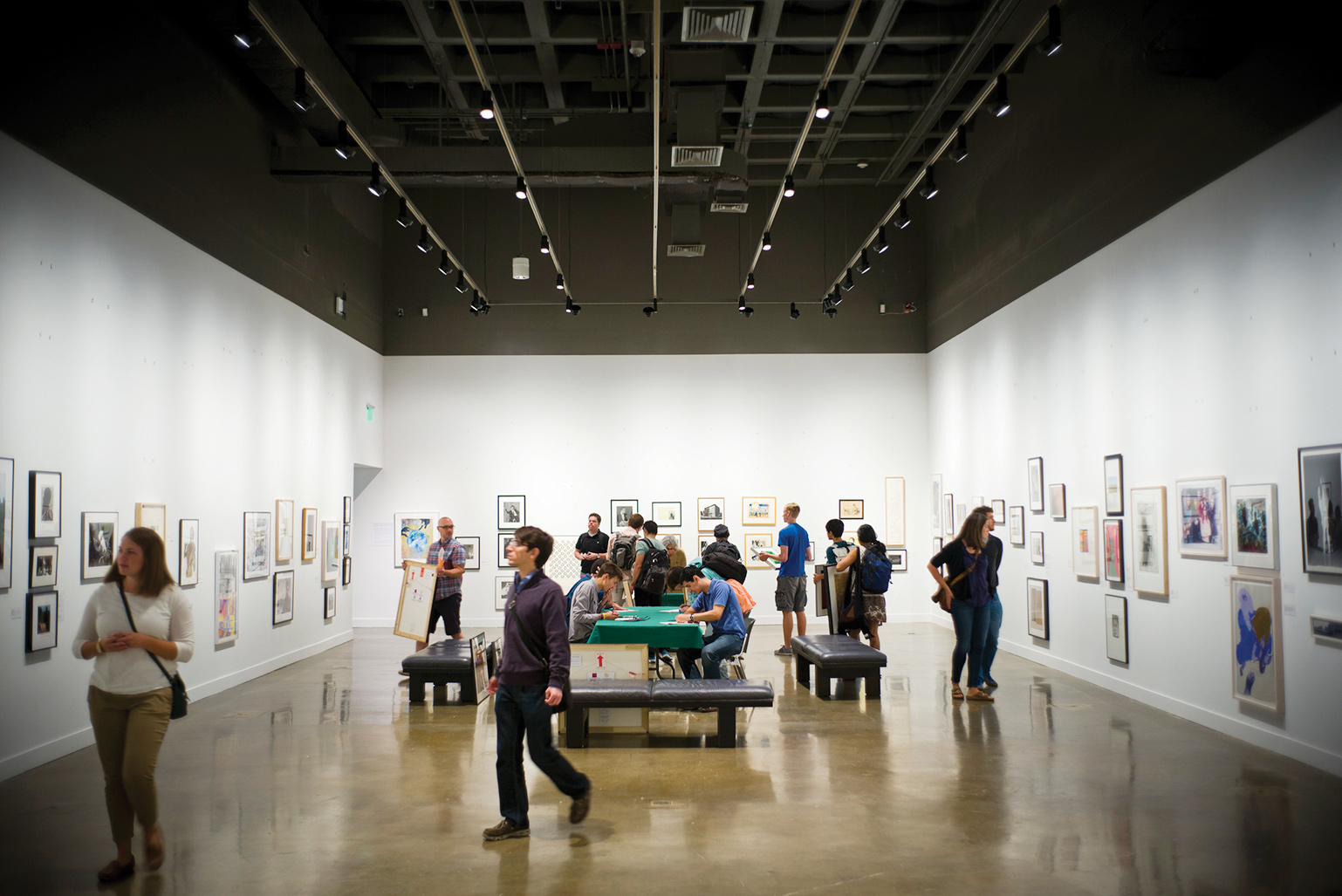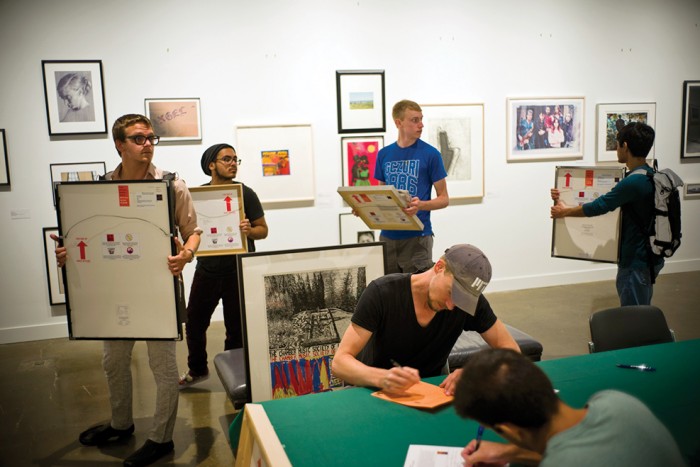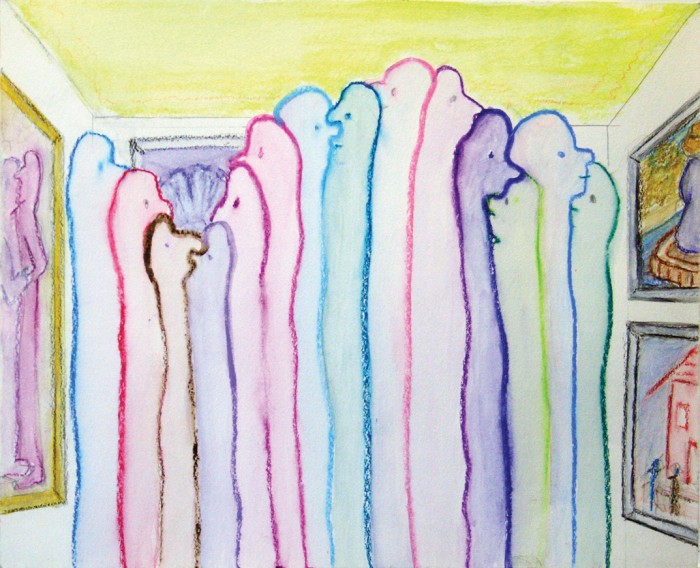
Visitors to MIT the second week of September may have spotted what looked like a slow art heist: Over three days, nearly 600 students entered the List Visual Arts Center and left with pieces of its collection.
This academic year marks the 45th anniversary of MIT’s Student Loan Art Program, which invites undergraduates and grad students to view the collection, choose their favorites, and participate in a lottery to determine who gets to hang a piece in their dorm room or apartment for the year. This fall, roughly 60 percent of students entering the lottery won the right to borrow a work of art.
The Student Loan Art Collection began with the Catherine N. Stratton Collection of Graphic Arts, established in 1966 by Catherine “Kay” Stratton, the wife of then-president Julius A. Stratton. Kay Stratton, who died in September at age 100, sought to help MIT students learn about art—and to enrich the world that they would help build. “It has always seemed to me that you could be an excellent engineer, but if you wanted to be beautiful,” she said in 2007, “if you wanted to build a beautiful bridge, you had to have a background in the arts.”

Students took this advice to heart and began borrowing art from her collection in 1969. The addition of the Albert and Vera List Student Loan Collection in 1977 prompted the first of the now-annual September gallery shows. Other influxes of loaner art came from photography enthusiast Ronald A. Kurtz ’54, ’59, SM ’60, and Cynthia F. and Michael W. Weisfield ’66. Supported by MIT’s Council for the Arts, which Kay Stratton helped establish, and patrons like the MIT Friends of Boston Art, the Student Loan Art Program grows by 15 to 20 artworks every year.
The art is eclectic: students might find a 19th-century exhibition poster nestled next to a 21st-century movie still, or a fuzzy Richard Artschwager question mark alongside a bright Fred Tomaselli collage. Doc Edgerton’s strobe-light photographs might appeal to some, while red-and-blue Louise Bourgeois spiders, dancing on a sheet of music paper, might appeal to others.
In this year’s lottery, Desi Gonzalez, a graduate student in comparative media studies, received her first choice, Frances Stark’s Untitled, after trying for it last year and coming up short. “Looking at a work over time changes how you see,she she explained in a blog post. “Having a work hanging on your wall for nine months—it allows you to experience art in a way you never could within a museum.”
Those who don’t win the initial lottery may be selected as alternates, who get first pick among the leftovers. That’s how graduate student Anika Gupta wound up with a 1926 portrait of social activist Dorothy Whitney by renowned black-and-white photographer Berenice Abbott. “What I liked about my piece was the mischievous expression in Whitney’s eyes,” she says. “I felt like I was looking at a person whom I would want to get to know.”

graphite, colored pencil, watercolor on paper
Gift of the artist
MIT List Visual Arts Center
By the exhibition’s final day, everything had to go: Students who lined up early enough in the List’s lobby were guaranteed to come away with something. Freshman Mary Clare Beytagh left with Fia Backström’s Studies in Leadership: The Golden Voice.
“I’d actually been waiting for art since I got here,” she said as she left the gallery. “There’s a big blank space above my bed.” And with that, she began lugging the piece—which is nearly as tall as she is—back to her dorm.
Keep Reading
Most Popular
Large language models can do jaw-dropping things. But nobody knows exactly why.
And that's a problem. Figuring it out is one of the biggest scientific puzzles of our time and a crucial step towards controlling more powerful future models.
The problem with plug-in hybrids? Their drivers.
Plug-in hybrids are often sold as a transition to EVs, but new data from Europe shows we’re still underestimating the emissions they produce.
Google DeepMind’s new generative model makes Super Mario–like games from scratch
Genie learns how to control games by watching hours and hours of video. It could help train next-gen robots too.
How scientists traced a mysterious covid case back to six toilets
When wastewater surveillance turns into a hunt for a single infected individual, the ethics get tricky.
Stay connected
Get the latest updates from
MIT Technology Review
Discover special offers, top stories, upcoming events, and more.